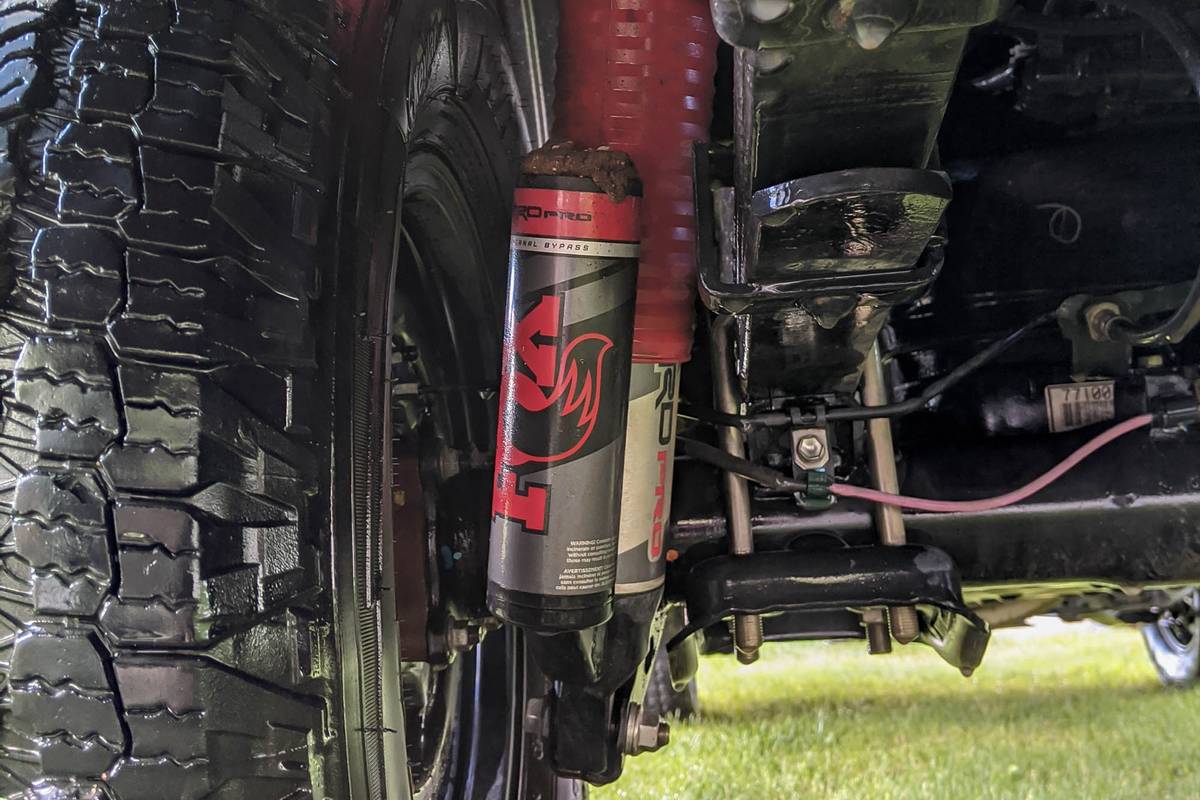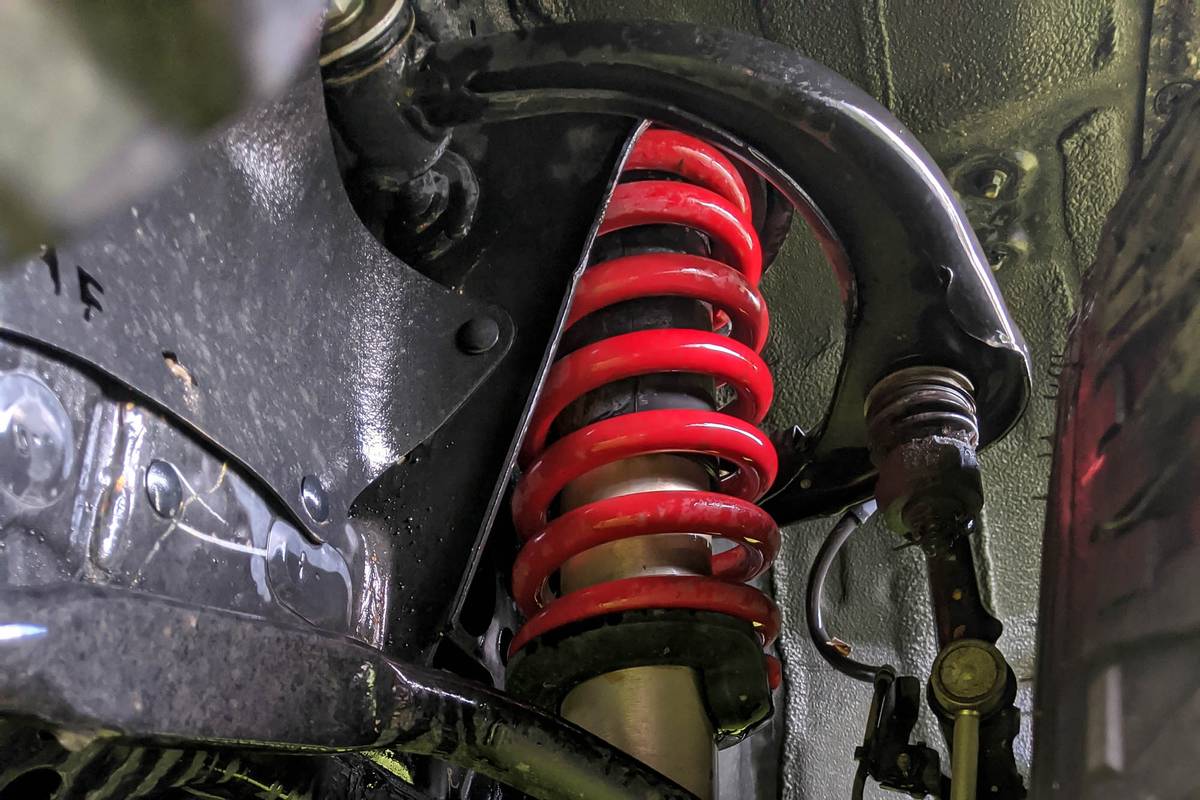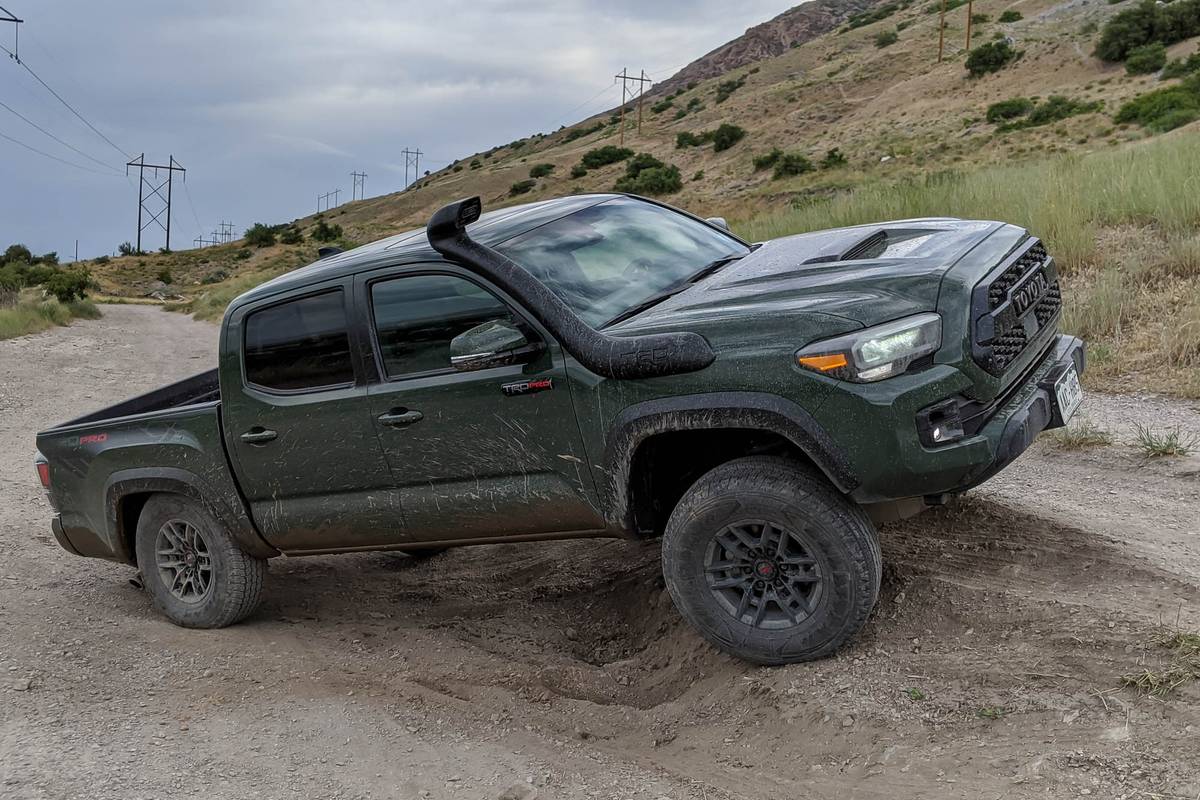What’s So Special About the 2020 Toyota Tacoma TRD Pro’s Fox Shocks?

There’s one major item that sets the 2020 Toyota Tacoma TRD Pro apart from the rest of the lineup: its Fox shocks. What’s so special about these shocks? How do they work? Most importantly, how do they affect the driving dynamics?
Related: 2020 Toyota Tacoma TRD Pro First Drive: Better but Still Behind
What Is a Shock Absorber?
Before we get into the Tacoma’s TRD Pro Fox shocks, let’s take a minute to discuss what a shock absorber does. Ultimately, shocks dampen movement. A suspension is designed to reduce the imperfections on road surfaces when driving. The springs, regardless of type, are designed to support the weight of the vehicle and its cargo while still allowing for compression and extension to smooth out holes and bumps. However, without shock absorbers, there would be little to dampen the springs and the vehicle would continue to move up and down long after passing the road imperfection.

Shock absorbers dampen the movement of the spring by creating resistance in compression and rebound. What’s compression and rebound? Compression damping limits how fast the suspension can compress, for example, when passing over a speed bump; rebound damping controls how fast the suspension can extend, as in passing over a hole or when returning to the normal position after the compression stage of a bump. The energy from these movements is converted to heat, which is dissipated through the shock’s body and into the surrounding air.
The way shocks create a damping force is by creating resistance on a piston that moves inside the shock body. The resistance comes from having oil flow through holes and washer stacks that act as check valves in the piston. The more freely the oil flows, the less damping there is. The check valves allow for compression and rebound to be tuned separately.
Tacoma TRD Pro Fox Internal Bypass Shocks
Fox is widely known for creating some of the best shocks in the industry. They have a strong history in racing both on and off pavement, and that expertise was applied to the Tacoma TRD Pro’s shocks. The internal bypass system allows for the shocks to be tuned differently based on their location within the stroke.
The Tacoma TRD Pro’s Fox shocks have three distinct zones: Ride Zone, Bump Zone and Catch Zone. In the Ride Zone, the resistance is minimal to allow for a smooth and comfortable on-pavement ride. When passing over large bumps, the shock enters the Bump Zone, which greatly restricts the fluid from flowing through the compression valving. This makes the shocks stiffer and reduces the likelihood of bottoming out. There’s a small transition zone between the compression and rebound that allows for the shock to hang for a short time to reduce bucking. When passing over a large dip, the oil is forced through the rebound valving in the Catch Zone to prevent a hard top-out situation.
In short, the internal bypass system allows for Toyota engineers to tune the shocks for peak performance in a variety of situations. On the Tacoma, the front shocks have eight bypass zones (five compression, three rebound), while the rears have 11 (seven compression, four rebound). Along with that, the shocks are tuned very specifically for vehicle weight, suspension travel, and the weight of the wheels and tires.
Besides being internal bypass shocks, the TRD Fox shocks are larger in diameter with piggyback or remote reservoirs, and they have additional seals compared with most shocks. Heat often kills a shock, but the larger diameter allows for more heat to be dissipated and increases the amount of oil within the shock. The extra space of the remote reservoir also allows for additional oil and cooling. These shocks are designed to spend hours on end driving off-road without fading, overheating or blowing.
On- and Off-Road Testing

On-road, the Tacoma TRD Pro rides well and is compliant over most road imperfections. It felt middle of the class to me, with the Ford Ranger FX4 and Jeep Gladiator Rubicon being a bit harsher and the GMC Canyon/Chevrolet Colorado and Honda Ridgeline being smoother.
In the high-speed off-pavement section, the ride was a little stiff but very controlled, and one of the best I’ve tested. I did notice it was harsher than Toyota’s Sequoia TRD Pro, Tundra TRD Pro and Land Cruiser, but I believe with some gear in the bed, it would have been on par with its larger siblings. On the largest bumps, there was never any clanging or harsh bottoming out of the suspension, which can’t be said of many competitors.
I did ask Toyota about jumping the Tacoma TRD Pro, and they strongly recommended against it. The shocks are extremely durable and built to Toyota’s standards, but they were not designed to be used on airborne vehicles.
I found that the shocks allow for a significant amount of wheel travel in the low speed articulation and hill climb test. This means that the tires remain in contact with the ground more often, providing additional grip. On the hill climb, I was able to drive the hardest line with ease. This is due to the articulation of the suspension and the capable traction systems the truck is equipped with.
These shocks performed extremely well and can handle much more than I threw at them. They’ve been tuned very specifically for the Tacoma TRD Pro’s factory setup, and they clearly excel this way.
Cars.com’s Editorial department is your source for automotive news and reviews. In line with Cars.com’s long-standing ethics policy, editors and reviewers don’t accept gifts or free trips from automakers. The Editorial department is independent of Cars.com’s advertising, sales and sponsored content departments.
Featured stories




